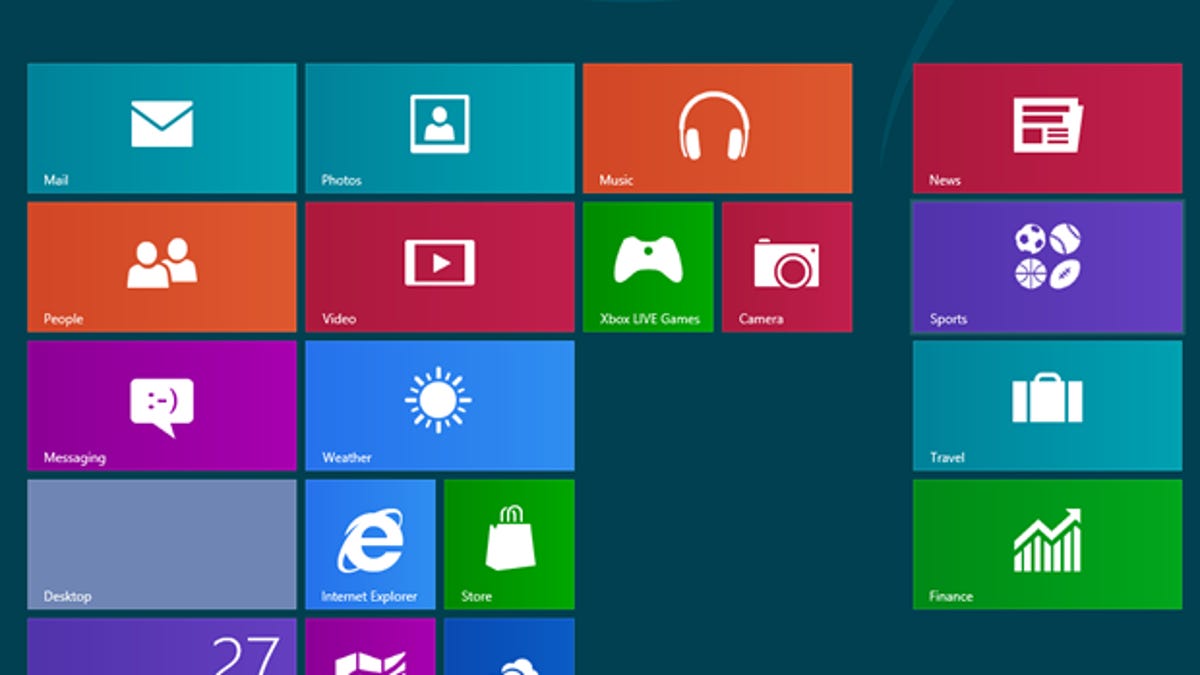Why Microsoft murdered the Start button in Windows 8
Speaking with U.K. publication PC Pro, a Microsoft program manager claims that people were no longer using the Start button.

Do you use the Start button in Windows? If not, then you're supposedly the reason Microsoft got rid of it in Windows 8.
Chaitanya Sareen, principal program manager at Microsoft, told U.K. computer publication PC Pro that data indicated a decrease in the use of the Start button. Citing "telemetry" obtained by the Microsoft Customer Experience Improvement Program, Sareen said the company found more users relying on the Windows taskbar for pinning and accessing their favorite software instead of going through the Start menu.
As a result of the reportedly dramatic drop in Start menu usage, Microsoft felt the time was ripe to do something with the old-fashioned menu -- "to revive it, to give it some new identity, give it some new power."
So apparently, Microsoft cooked up the new Metro Start screen, feeling it would provide that sense of power. Of course, the Start screen has proved to be perhaps the most controversial and debated feature of Windows 8. For people who choose to steer clear of the Metro screen, Sareen seems to feel the taskbar can do all the work.
"So I'm a desktop user, I pin the browser, Explorer, whatever my apps are," Sareen told PC Pro. "I don't go [to] the Start menu as often. If you're going to the Start screen now, we're going to unlock a whole new set of scenarios, or you can choose not to go there, stay in the desktop, and it's still fast. You can't beat the taskbar."
Sareen also played up the keyboard, claiming that Windows 8 users are opening apps via keyboard shortcuts as an alternative to the old Start menu. And amid complaints that Windows 8 is geared more for touch-screen tablets than PCs, Sareen says the OS "really works well with the mouse and keyboard."
Hmm, where do I start? Microsoft clearly continues to feel pressure to justify its decision to kill off the Start button. The company has received a lot of feedback via its Building Windows 8 blog and other resources, a fair amount from PC users unhappy over the changes.
But based on the comments from Sareen, Microsoft just seems to be out of touch with its users.
First, I agree that the taskbar is a great way to access your favorite software. I pin about 10 of my most frequently used programs on the taskbar. There's space for several more. But I don't want to crowd it with too many icons, otherwise I won't have enough room to switch between open applications.
So, what happens when I need to launch other programs, the ones I don't use as often? I've installed dozens and dozens of applications in Windows, and there are many I use once or twice a week or a few times a month. The most convenient way for me to open those is through the Start menu.
Second, the Start screen may be fine for Metro apps. But it's inefficient for launching desktop programs if you're primarily working in the desktop. Here are two scenarios: one under Windows 7 and one under Windows 8.
Windows 7: I'm working in the desktop and want to launch Adobe Photoshop, a program I use only occasionally. I click on the Start button, open the folder for Adobe Suite, and select the shortcut for Photoshop. Clean, simple, and quick.
Windows 8: I'm working in the desktop and want to launch Adobe Photoshop. Since I use it only occasionally, I don't have it set up as a desktop or taskbar icon. I press the Windows key or click the thumbnail in the lower right hot corner to launch the Metro Start screen. I hunt for the tile for Photoshop, assuming I decided to keep it on the Start screen. If not, then I have to open the Apps screen to locate the software. Finally, I find and click on its tile. Windows then brings me back to the desktop to launch Photoshop. Huh? How is that more efficient or more powerful?
So my choices are either to keep bouncing between the Start screen and the desktop each time I want to open an infrequently used desktop program, or set up dozens and dozens of shortcuts on my desktop for virtually every program I use.
Finally, there's something about Microsoft basing its decisions on "telemetry" that bothers me.
How many users participate in the Microsoft Customer Experience Improvement Program? And who are they? Average users? Power users? Using data to help make decisions is fine. But at some point, you have trust your own instincts and listen to the direct feedback from users, even if they disagree with you.
To me, it wouldn't seem like a big deal if Microsoft were to reinstate the traditional Start button in Windows 8. It's certainly technically doable, and it would help users feel more comfortable with the new operating system. But if the company keeps relying on its telemetry, then the chances of that happening are probably slim at best.

